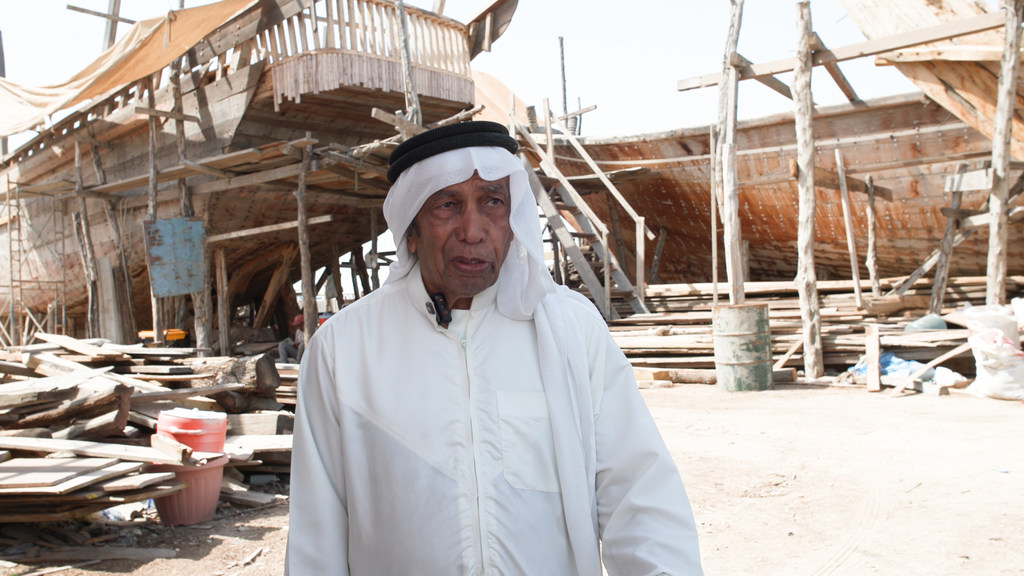“I always say that all the Bahranis have pearl dive in their blood,” said Mohamed Allaise, a pearl diver and field researcher at the Bahrain’s pearls and pearl stones (Danat). UN News. “Almost all families who moved from the Arabic Gulf or the Iranian coast to Bahrain were divers.”
Mr. Allaise is passionate about preserving and reliving this millennial tradition, notes that many families in the Gulf nation have a member who was a pearl diver or somehow contributed to the pearl diving industry.
Pearling in Bahrain’s Persian Persian Gulf’s economy for thousands of years, but after a peak at the turn of the twentieth century, the perfection of pearls cultivated by Japan in the 1930s caused a clear and devastating decline in industry.
Khaled Salman, a diver since the 1970s, explains that while the dive continues, this is no longer done in the old way.
Bahrein Dive, Mohamed Allaise extracting oyster pearls.
“Today, larger amounts are extracted due to advances in technology, allowing divers to remain under water for longer periods. In the past, a diver remained underwater for four minutes, but now divers can stay under water for an hour or more. ”
Due to lower pearl prices, Salman notes: “Many people do not sell the pearls that extract; They store them until prices go up and then sell them to traders in Bahrain. ”
Some pearls are used in local industries, while others are marketed outside Bahrain. It also highlights three types of pearls: synthetic, cultivated and natural, adding that “distinguishing between these types requires modern experience and equipment.”
Pearling’s decline also affected Bahrain’s shipbuilding industry. Abdulla, a designer of wood and boat ships for over 35 years, shares his perspective: “Bahrain is famous for its naval building industry, which was an integral part of pearling. There are several types of ships, ranging from design, but now smaller ships are used for pieces due to decreased demand. ”
Wood for shipbuilding is imported from Africa and Singapore and, says Abdulla, the life of a ship can extend beyond 100 years.

Abdulla, wooden ships designer and boats for over 35 years.
Folklore, Songs and Tradition
“Most Bahrain’s traditions are connected to the pearl diving industry. For example, pearl dive songs, ”says Allaise. “Pearl dive folklore was transmitted for generations. We still sang the same songs, which were originally sung to increase morals in the boats. ”
Bahrain’s Pearling website, known as the Pearling pathLike this, was registered As a World Heritage, Educational, Scientific and Cultural Organization of the United Nations (UNESCO). The site witnesses the tradition of Pearling and the wealth it generated in the Gulf region for millennia.
According to UNESCO, the area consists of 17 buildings in the city of Murharraq, three offshore oyster beds, part of the sea bank and the Fortress Qal’at Bu Mahir, at the southern tip of Muharraq Island, where boats used to leave for Oyster beds.
There are stores, warehouses, a mosque and the houses of rich traders in the area. According to UNESCO, the location is the only complete example of Pearling’s cultural tradition and the wealth it has produced during the period when the Gulf Economy has been dominated by trade from the second century until Japan has developed cultivated pearls.
It also constitutes an excellent example of traditional use of human resources and interaction with the environment, which shaped the economy and cultural identity of the island society.

A band playing a pearl dive song in Bahrain. Pearl dive folklore was transmitted for generations.
Pearling is back
“I’m one of the people who fell in love with pearl diving without any guidance from my parents or family,” Mr. Allaise. “The generation before us was not allowed to dive when they were young because, after oil was discovered, all jobs moved to the oil industry.”
According to Mr. Allaise, since 2017, when the Bahrain authorities introduced pearl dive licenses, many people who signed up had no prior knowledge of pearl diving.
“Now, seven years later, many Bahrainis have reconnected with this inheritance. More than 1,000 divers are now registered and regularly dive to create an income for themselves. ”



